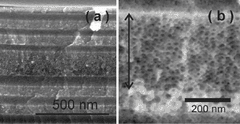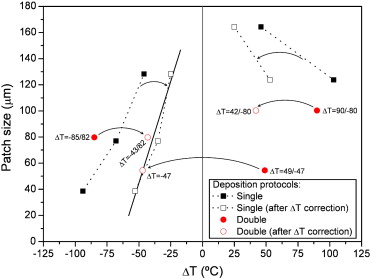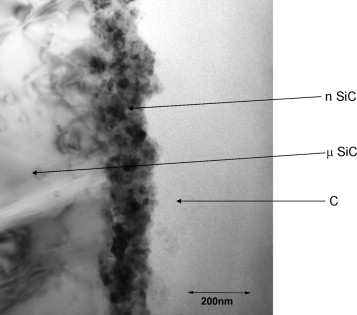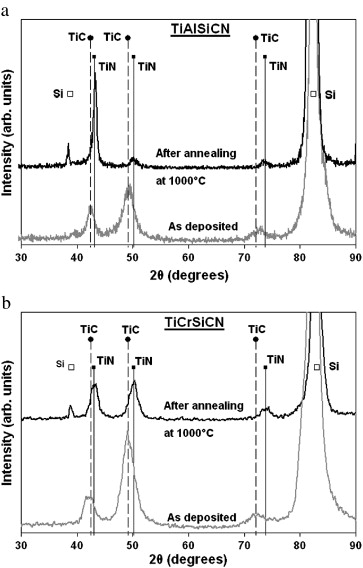Artículos SCI
2011
2011
Materiales Ópticos Multifuncionales
Porous supramolecularly templated optical resonators built in 1D photonic crystals
Hidalgo, N., Calvo, M.E., Bellino, M.G., Soler-Illia, G.J.A.A., Míguez, H.Advanced Functional Materials, 21 (2011) 2534-2540
Show abstract ▽

A synthetic route to attain photonic multilayers that presents controlled porosity only at the middle-layer level is shown. The spectral resonance associated with this porous layer shows strong sensitivity to the presence of vapors adsorbed or condensed within the void network, providing a potentially relevant material for gas detection. The importance of the interplay between pore and probe-molecule diameters is studied and its implications in size-selective detection are discussed. Controlled porosity: Photonic multilayers that presents controlled porosity only at the middle-layer level are herein introduced. The optical response of the ensemble shows strong sensitivity to the presence of vapors adsorbed or condensed within the void network, providing a potentially relevant material for gas detection.
Julio, 2011 | DOI: 10.1002/adfm.201002486
Nanotecnología en Superficies y Plasma
Bacterial adherence on UHMWPE with vitamin E: an in vitro study
E. Gómez-Barrena, J. Esteban, D. Molina-Manso, H. Adames, M.J. Martínez-Morlanes, A. Terriza, F. Yubero and J. A. PuértolasJournal of Materials Science: Materials in Medicine, 22 (2011) 1701-1706
Show abstract ▽

Orthopaedic materials may improve its capacity to resist bacterial adherence, and subsequent infection. Our aim was to test the bacterial adherence to alpha-tocopherol (frequently named vitamin E, VE) doped or blended UHMWPE with S. aureus and S. epidermidis, compared to virgin material. Collection strains and clinical strains isolated from patients with orthopaedic infections were used, with the biofilm-developing ability as a covariable. While collection strains showed significantly less adherence to VE-UHMWPE, some clinical strains failed to confirm this effect, leading to the conclusion that VE doped or blended UHMWPE affects the adherence of some S. epidermidis and S. aureus strains, independently of the concentration in use, but the results showed important intraspecies differences and cannot be generalized.
Julio, 2011 | DOI: 10.1007/s10856-011-4340-5
Materiales Nanoestructurados y Microestructura
Microstructure and chemical bonding of DLC films deposited on ACM rubber by PACVD
Martinez-Martinez, D., Schenkel, M., Pei, Y.T., Sánchez-López, J.C., De Hosson, J.T.H.M.Surface and Coatings Technology, 205 (2011) S75-S78
Show abstract ▽

The microstructure and chemical bonding of DLC films prepared by plasma assisted chemical vapor deposition on acrylic rubber (ACM) are studied in this paper. The temperature variation produced by the ion impingement during plasma cleaning and subsequent film deposition was used to modify the film microstructure by controlling the different degrees of strain applied to the substrate. The film microstructure is studied by top view and cross sectional SEM. The observed patch sizes are correlated with the variation of temperature that occurred during deposition. Finally, the chemical bonding of the samples is studied by Raman spectroscopy. All the samples show similar spectra regardless the bias voltage used.
Julio, 2011 | DOI: 10.1016/j.surfcoat.2011.02.067
Reactividad de Sólidos
Thermal study of unaltered and altered dolomitic rock samples from ancient monuments - The case of Villarcayo de Merindad de Castilla la Vieja (Burgos, Spain)
Perez-Rodriguez, JL; Duran, A; Perez-Maqueda, LAJournal of Thermal Analysis and Calorimetry, 104 (2011) 467-474
Show abstract ▽

In this study, the decomposition behaviour of unaltered and altered dolomitic rock samples used in Cultural Heritage buildings was studied by simultaneous TG-DTA experiments at different atmospheres, X-ray diffraction in a high-temperature chamber, and evolved gas analysis. The components of dolomite rock samples and hydrated calcium oxalate formed during the alteration processes of the rocks were characterized, and the decomposition mechanisms of these components were determined. The TG-DTA experiments carried out at CO2 atmosphere were used to determine the carbonate compounds in the rock samples. The TG-DTA study characterized the presence of organic compounds formed during the biological degradation of the rock samples, possibly responsible of the hydrated calcium oxalate formation.
Junio, 2011 | DOI: 10.1007/s10973-011-1348-5
Materiales Nanoestructurados y Microestructura
Comparative investigation of Al- and Cr-doped TiSiCN coatings
D.V. Shtansky, K.A. Kuptsov, Ph.V. Kiryukhantsev-Korneev, A.N. Sheveiko, A. Fernandez and M.I. PetrzhikSurface and Coatings Technology, 205 (2011) 4640-4648
Show abstract ▽

The aim of this work was a comparative investigation of the structure and properties of Al- and Cr-doped TiSiCN coatings deposited by magnetron sputtering of composite TiAlSiCN and TiCrSiCN targets produced by self-propagating high-temperature synthesis method. Based on X-ray diffraction, scanning and transmission electron microscopy, X-ray photoelectron spectroscopy, and Raman spectroscopy data, the Al- and Cr-doped TiSiCN coatings possessed nanocomposite structures (Ti,Al)(C,N)/a-(Si,C) and (Ti,Cr)(C,N)/a-SiCxNy/a-C with cubic crystallites embedded in an amorphous matrix. To evaluate the thermal stability and oxidation resistance, the coatings were annealed either in vacuum at 1000, 1100, 1200, and 1300°C or in air at 1000°C for 1h. The results obtained show that the hardness of the Al-doped TiSiCN coatings increased from 41 to 46GPa, reaching maximum at 1000°C, and then slightly decreased to 38GPa at 1300°C. The Cr-doped TiSiCN coatings demonstrated high thermal stability up to 1100°C with hardness above 34GPa. Although both Al- and Cr-doped TiSiCN coatings possessed improved oxidation resistance up to 1000°C, the TiAlSiCN coatings were more oxidation resistant than their TiCrSiCN counterparts. The TiCrSiCN coatings showed better tribological characteristics both at 25 and 700°C and superior cutting performance compared with the TiAlSiCN coatings.
Junio, 2011 | DOI: 10.1016/j.surfcoat.2011.04.012
- ‹ anterior
- 352 of 422
- siguiente ›














